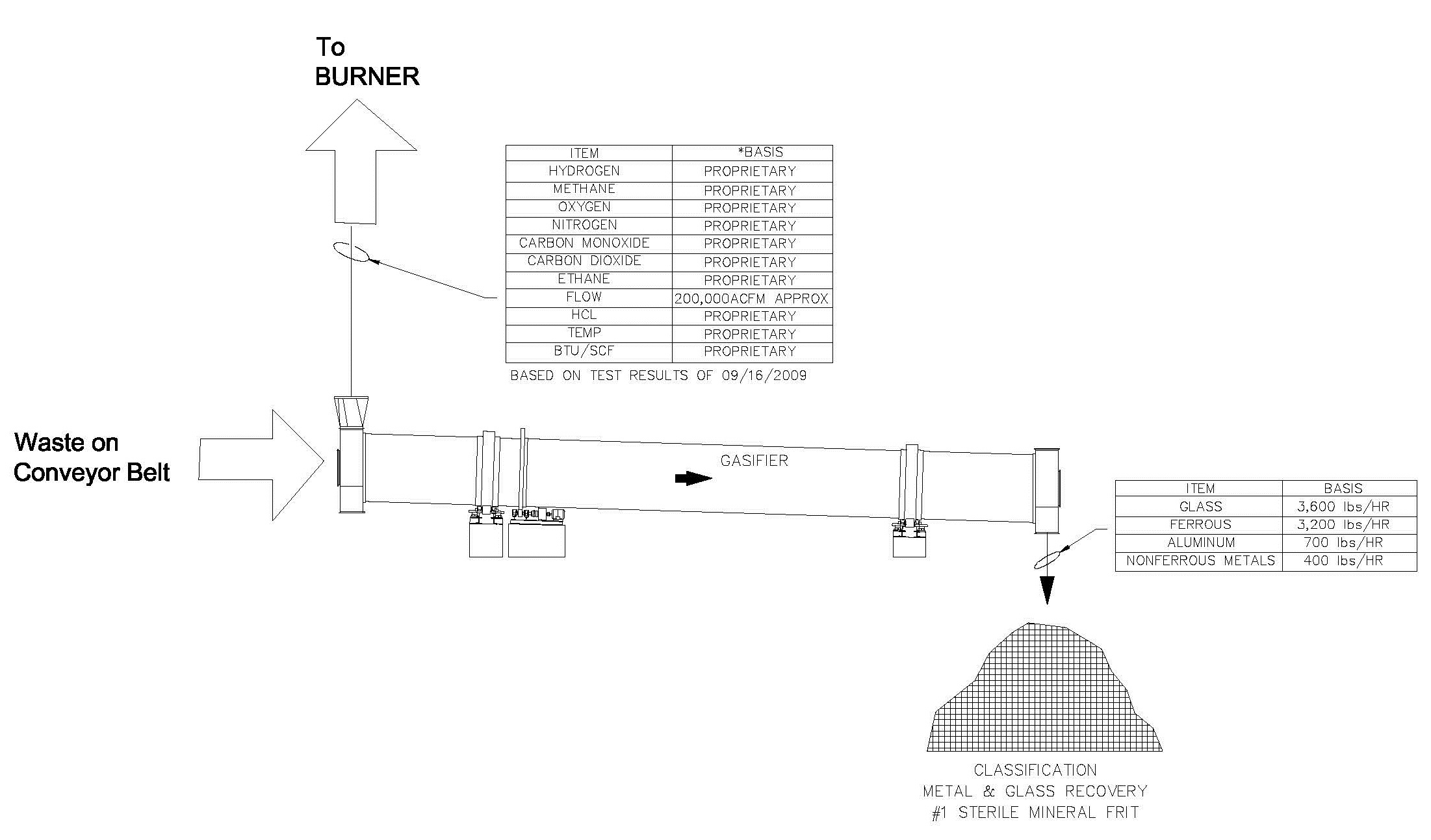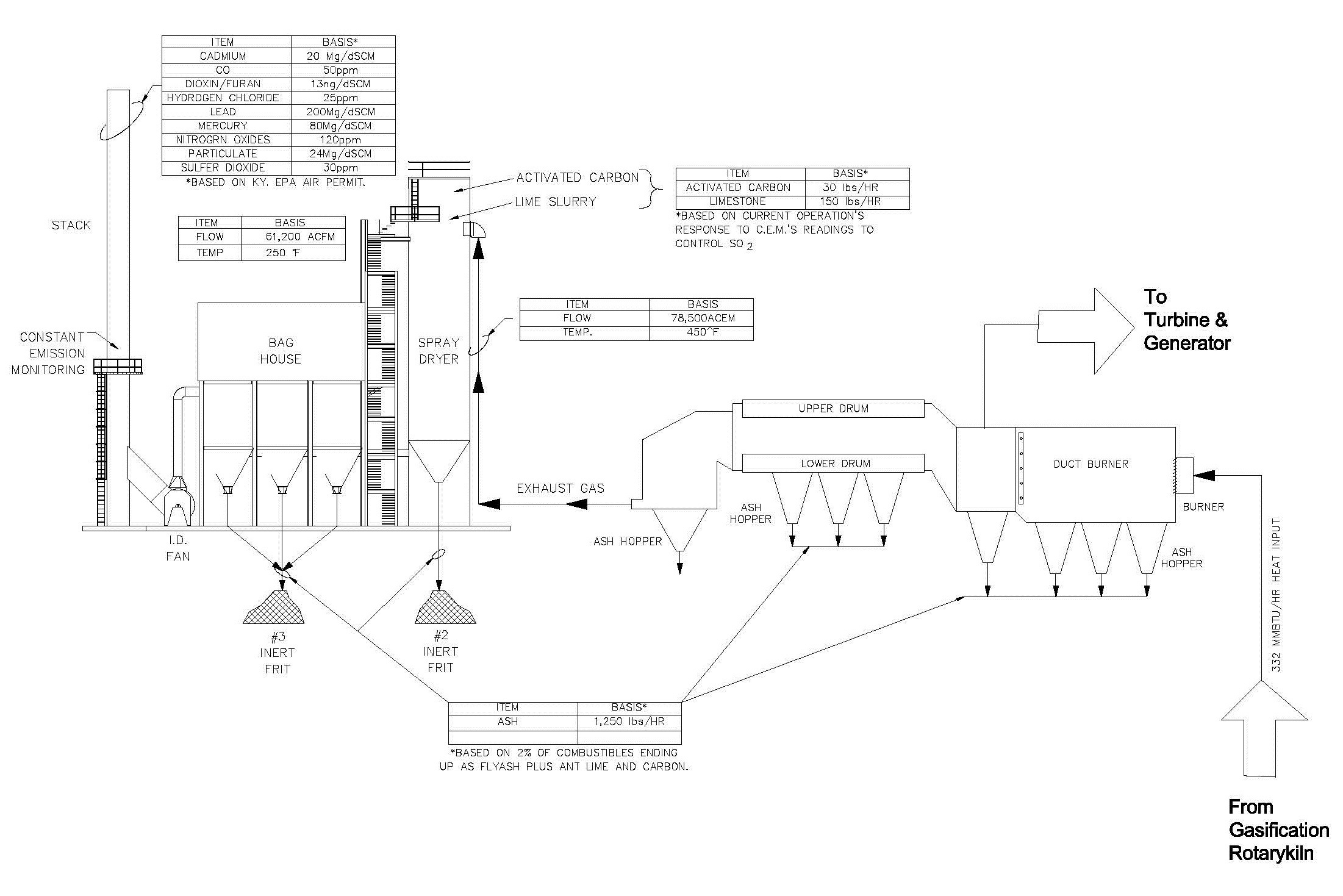Simple Plant Design

1. Moving waste to rotary kiln
The collected waste is transferred to a rotary kiln using two conveyor belts.
The top conveyor belt moves high heat value waste (used tires, non-recyclable plastic, wood, etc.)
The lower conveyor belt moves low heat value waste (general waste, food waste, etc.) and the automated system controls each conveyor belt according to the internal temperature of the rotary kiln to maintain a constant temperature for gasification.
2. Gasification of waste
Low temperature gasification of waste in the kiln (Syngas production process)
The patented and improved rotary kiln preheats to slightly above 600° F.
Initialization of gasification plant Preheating for about 1 hour in gasification furnace (rotary kiln) at initial operation. When the operating temperature is reached, the temperature inside the rotary kiln is maintained. There is no need for fuel in the subsequent treatment of waste, and gasification by the heat generated from the waste.
The syngas produced in the rotary kiln is sent to the burner at about 1,800° F.
All byproducts generated during gasification are 100 % recycled.
Bottom ash is used in production of asphalt. All metals are recycled. Glass with ceramic is pulverized and used in concrete production.
3. Syngas being treated at high temperature in the boiler burner
Synthetic gas generated from a rotary kiln contains harmful substances such as volatile organic compounds (VOC), hydrocarbons, dioxins and furans.
Synthetic gas containing harmful substances is destroyed in the process of combustion in the burner, and the hot steam is sent to the turbine for power generation.
The remaining flue gas is sent to the scrubber and the activated carbon and lime slurry are sprayed to remove acidic gas and heavy metals.
In addition, the flue gas is cooled to prevent reformation of dioxin, and the air is discharged from the bag house through the filter. (Below US EPA standards - see Resources)
Fly ash from the bag House is also used in asphalt production.
4. Produce turbine-driven power with steam generated at high temperature in the boiler.
The high-temperature(750° F) and highly pressurized(750 PSI) steam drives the turbine and the generator.
* 776KW electric power production per ton of MSW in USA.




